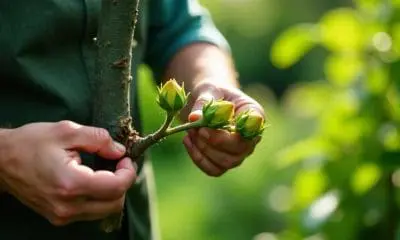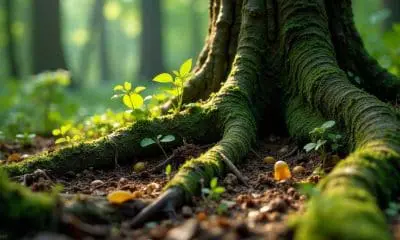Tree Trimming
Mastering Tree Removal: Your Essential Guide to Storm Preparedness
Mastering tree removal and storm preparedness begins with proactive tree maintenance. Regular inspections for decay and removing risky branches are crucial.
To master tree removal and storm preparedness, start by valuing proactive tree maintenance. Regularly inspect your trees for signs of decay and gather insights on hazardous ones. Remove risky branches before storms hit, and consider hiring certified arborists for larger trees. Preparing your trees includes pruning, hydrating them properly, and evaluating their stability. Don’t forget essential safety measures, like securing outdoor items and having emergency supplies ready. There’s more to learn about keeping your property safe and sound in storms.
The Importance of Proactive Tree Maintenance
When you think about storm preparedness, it’s easy to overlook the trees in your yard, but proactive tree maintenance can make a significant difference. Regularly inspecting your trees for dead or weak branches helps prevent them from becoming hazards during a storm. Pruning encourages healthy growth and reduces wind resistance, making your trees less likely to topple. Additionally, maintaining a safe distance between trees and your home is essential; this minimizes the risk of falling limbs causing damage. By investing time in tree care now, you’re not just enhancing your yard’s beauty, you’re also safeguarding your property against storm-related destruction.
How to Recognize Hazardous Trees on Your Property
Recognizing hazardous trees on your property is just as important as maintaining them. Start by looking for signs of decay, such as dead branches, hollow trunks, or fungus growth. Leaning trees or those with extensive root damage can also pose risks during storms. Keep an eye on trees with cracks or splits in the trunk, as these can weaken their structure. Additionally, consider the tree’s proximity to your home and power lines. Regularly inspect your trees, especially before severe weather, to identify potential hazards. Taking these steps can help keep your property safe and minimize storm damage in the long run.
Effective Removal Strategies to Minimize Storm Damage
Although you might not think about tree removal until a storm is on the horizon, having a proactive plan can greatly reduce the risk of damage to your property. Here are three effective removal strategies to evaluate:
- Assess Tree Health: Regularly inspect your trees for signs of decay or disease, as these can compromise stability.
- Hire Professionals: Engage certified arborists for safe and efficient tree removal, especially for large or hazardous trees.
- Remove Nearby Hazards: Clear any dead branches or debris that could become projectiles during a storm, minimizing potential damage to your home and surroundings.
Preparing Your Trees for Severe Weather
Preparing your trees for severe weather is essential, especially since strong winds and heavy rain can cause significant damage if you’re not ready. Start by evaluating your trees for any signs of weakness, like dead branches or decay. Regular pruning helps maintain their health, ensuring they can withstand harsh conditions. Consider cabling or bracing for larger trees with weak structures. Also, remove any nearby debris that could become projectiles in a storm. Finally, keep your trees hydrated but avoid overwatering, as soggy roots can weaken them. Taking these proactive steps can significantly reduce the risk of storm damage.
Essential Safety Measures Before and After a Storm
Once you’ve taken steps to prepare your trees for potential storms, it’s time to think about safety measures that can protect both your property and your loved ones. Here are three essential safety tips:
- Secure Outdoor Items: Bring in or secure loose items like patio furniture, decorations, and toys that could become projectiles in strong winds.
- Check Emergency Supplies: Verify you have a first aid kit, flashlights, batteries, and non-perishable food ready in case of power outages.
- Inspect Your Home: Look for potential hazards, such as branches overhanging your roof, and consider trimming them before the storm hits.
Frequently Asked Questions
How Often Should I Inspect My Trees for Potential Hazards?
You should inspect your trees at least twice a year, preferably in spring and fall. Regular checks help you spot potential hazards early, ensuring your trees remain healthy and reducing the risk of storm damage.
What Types of Trees Are Most Vulnerable to Storm Damage?
Certain tree types, like weak-wooded species or those with shallow roots, are more vulnerable to storm damage. Regularly inspect your trees and consider removing or reinforcing those that show signs of weakness before severe weather hits.
Can I Remove a Tree Myself, or Should I Hire a Professional?
In regard to tree removal, think twice before diving in like a knight charging into battle. You might save money, but hiring a professional guarantees safety and proper techniques for a successful outcome.
What Tools Do I Need for Safe Tree Removal?
For safe tree removal, you’ll need a chainsaw, safety goggles, gloves, and a hard hat. Additionally, have ropes, a ladder, and a first aid kit handy. Always prioritize safety and consider hiring a professional if unsure.
How Can I Encourage Healthy Tree Growth to Withstand Storms?
Imagine your tree as a warrior, ready for battle. To strengthen it, water regularly, mulch for nutrients, and prune wisely. A healthy tree’s roots will hold firm, keeping it resilient against nature’s storms.

Hello there! I’m Logan Foster, the green-thumbed social media marketer behind the vibrant world of 1800TreeGuy.com. With roots firmly planted in arboriculture, I’ve branched out to help clients cultivate their dream outdoor spaces, one leafy canopy at a time. My knack for nurturing nature is more than a profession—it’s a way of life.
When I’m not talking trees and teaching the art of arboreal care, you can find me cheering on the Bulldogs—my alma mater’s pride and my forever team. My environmental studies there didn’t just teach me about ecosystems; they instilled a lifelong passion for protecting our planet.
Off the clock, I’m an adventurer at heart. Whether it’s trekking the Appalachian trails, pedaling down a mountain path, or crafting guides to share the wonders of the wild, I’m happiest with soil under my nails and the sun on my face. And let’s not forget Yoda, my pug sidekick. He may not have mastered the art of stillness, but his joyful grins are my daily dose of happiness.
I’m all about making connections—between people and the great outdoors and between my clients and their ideal landscape visions. My approach is personal; every tree has a story, and every garden reflects its caretaker.
If you want to green your scene or share in my outdoor escapades, give me a shout on Instagram or Facebook. Let’s cultivate a conversation and grow a community rooted in a love for the lush life.













